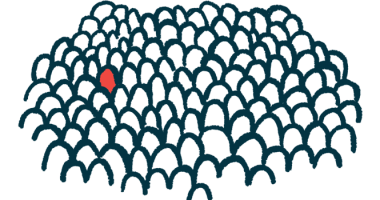Mutation in a Jewish Population May Lead to Variegate Porphyria

A previously identified mutation in the PPOX gene in a Moroccan Jewish population may cause variegate porphyria by impairing the correct 3D folding of the PPOX enzyme.
Incorrectly folded, the activity of the mutated enzyme was severely impaired.
The study, “Molecular characterization of a novel His333Arg variant of human protoporphyrinogen oxidase IX,” was published in the journal Biochemical and Biophysical Research Communications.
Variegate porphyria is caused by mutations in the PPOX gene, leading to the production of a faulty version of an enzyme called protoporphyrinogen oxidase (PPOX). This enzyme is part of the pathway that generates heme, a component of iron-containing proteins like hemoglobin, which is necessary for oxygen transport throughout the body.
Lower enzyme activity leads to the toxic buildup of porphyrin precursors, which in turn cause the typical symptoms of the disease, including blisters on sun-exposed skin, abdominal pain, seizures, and muscle weakness.
So far, over 180 mutations have been identified in the PPOX gene. In 2011, researchers in Czech Republic identified a new mutation, His333Arg, in five nonrelated Jewish families with variegate porphyria originating from Morocco.
However, at the time no further research was conducted to assess whether this mutation indeed impaired the activity of the PPOX enzyme.
Now, researchers purified and measured the enzymatic activity of the mutated PPOX and compared it with the activity of the normal (wild-type, or WT) enzyme using a fluorescence assay. A working enzyme leads to an increase in fluorescence, as its first target, or substrate, is converted into the next molecule in the pathway that is fluorescent.
Results showed that while the WT enzyme led to a steady increase in fluorescence, no fluorescence was detected with the mutated protein. These data support a direct link between the mutated protein and lack of enzymatic activity.
Further analyses revealed that the mutated protein had an abnormal 3D shape, which impairs proper function.
Inside cells, the WT protein was localized in mitochondria — small cell compartments that are responsible for energy production. Using microscopy, researchers found the mutated protein was also present in mitochondria, indicating the mutation did not prevent the protein from reaching its intended location within cells.
Overall, these results confirm the disease-causing impact of a previously identified mutation in the Moroccan Jewish population.
“Future DNA analyses in this cohort can primarily focus on this variant to identify asymptomatic carriers of mutations in families with [variegate porphyria]. This could also help to reduce the risk of [variegate porphyria] onset and to prevent acute attacks by having the patient avoid known [variegate porphyria]-triggering factors,” its researchers wrote.







